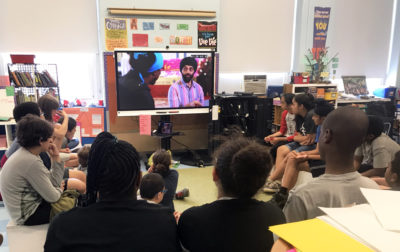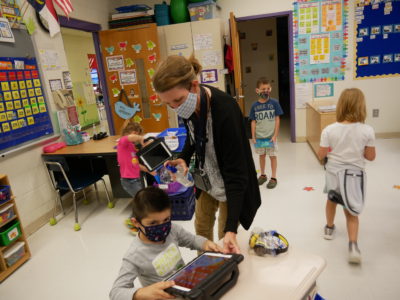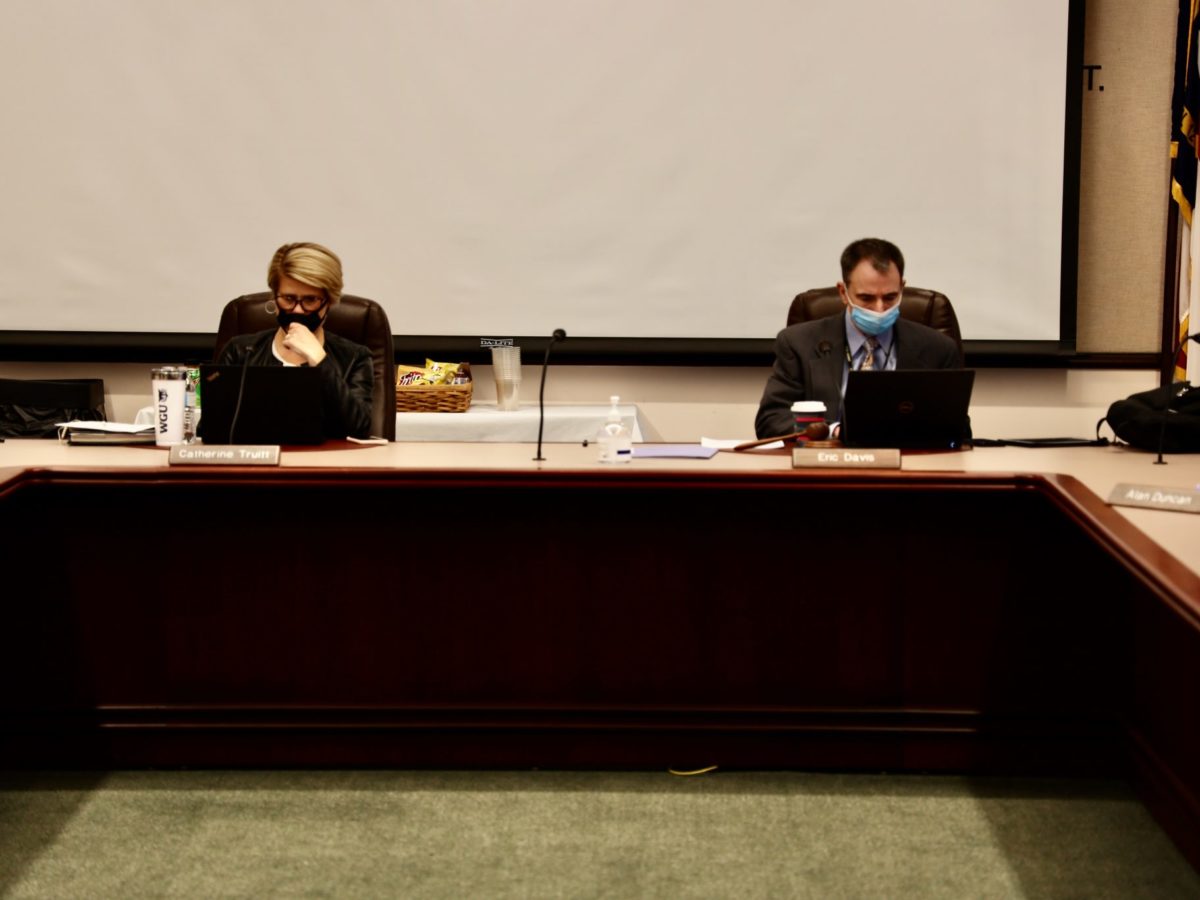
The State Board of Education tackled a number of items during its monthly meeting this week, including new social studies standards. Other items included their legislative agenda for the long session, a report on crime and violence in schools, and a COVID-19 update.
Here’s what you may have missed.
New social studies standards
The Board voted to approve new social studies standards for the state’s public schools on Thursday, Feb. 4.
The vote was 7 to 5, with almost all members who are elected Republican officials or Republican appointees voting against the standards. The only exception to that was State Board Chair Eric Davis, appointed by former Republican Gov. Pat McCrory.
Here is how the vote went:
- Olivia Oxendine: No
- Todd Chasteen: No
- Lt. Gov. Mark Robinson: No
- Treasurer Dale Folwell: No
- Amy White: No
- Eric Davis: Yes
- Alan Duncan: Yes
- Reginald Kenan: Yes
- James Ford: Yes
- Jill Camnitz: Yes
- Donna Tipton-Rogers: Yes
- Wendell Hall: Yes
The state superintendent doesn’t have a vote on the State Board.
The only addition between the draft of the standards seen at last week’s Board meeting and the draft approved this week was a preamble created by state Superintendent Catherine Truitt.
Davis said Wednesday that the preamble was created by Truitt as the two of them were thinking about how to make sure the tone of the standards balanced a celebration of American achievements with an examination of American shortcomings.
Before the final vote Thursday, Board member James Ford attempted to get the Board to adopt a previous version of the standards which included the terms “systemic racism,” “systemic discrimination” and “gender identity,” but only he and Board member Reginald Kenan voted yes on that motion, and it failed.
The focus of much of the debate around the standards is those three words. The version of the standards approved today simplified those terms to just “racism,” “discrimination” and “identity.”
Multiple members of the State Board weighed in on the controversial standards during the discussion on Wednesday. You can hear the complete discussion between 41:30 and 2:10:00 in the audio stream below.
Legislative priorities
The State Board also approved joint Board/Department of Public Instruction legislative priorities for this long session of the General Assembly.
The priorities include requests for more than $184 million total in new funding. You can see in the chart below how the funding ask breaks down into different buckets.
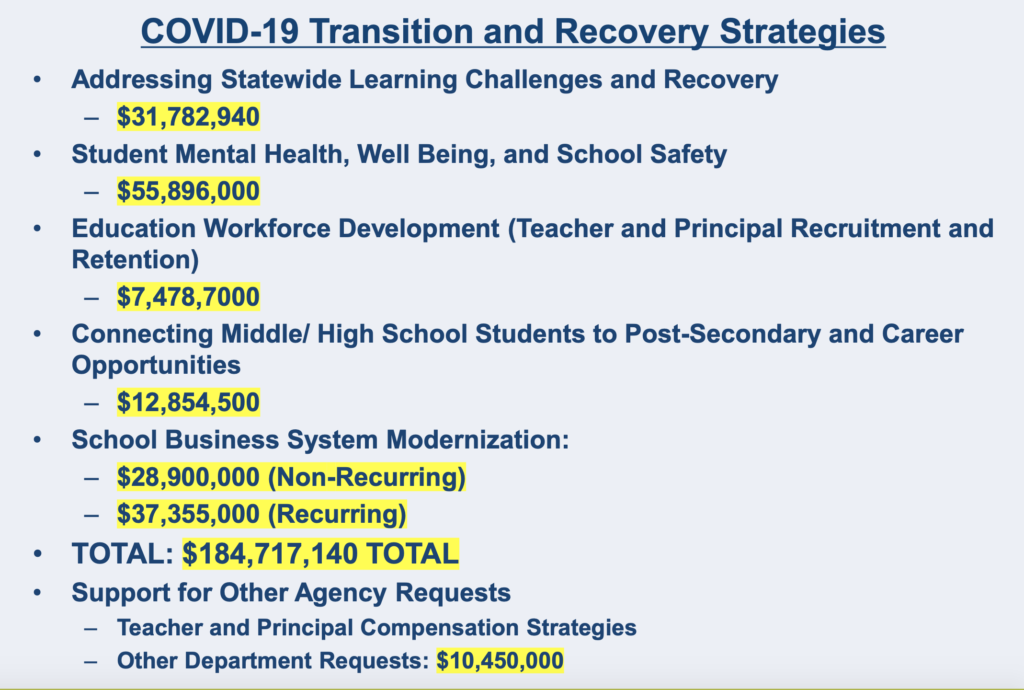
Here are details on where some of that money is going:
- Science of Reading training: $10 million
- Rebuilding district and regional support for teachers: $12 million
- Rebuilding district and regional support for principals: $7 million
- Pilot programs for pipeline development of student support staff positions, including psychologists, social workers, counselors, etc.: $14.5 million
- Immediate student support staffing: $22 million
- Exceptional children funding for future services: $7.5 million
- Expanded funding for limited English proficiency/English as a Second Language (ESL): $4 million
- Advanced teaching roles: $2,040,000
- New Teacher Support Program: $2,128,000
- Educator licensure system: $3 million
- School business systems modernization: $37,055,000 recurring for five years and $13.9 million non-recurring.
The priorities also include support for the following items, though no specific numbers:
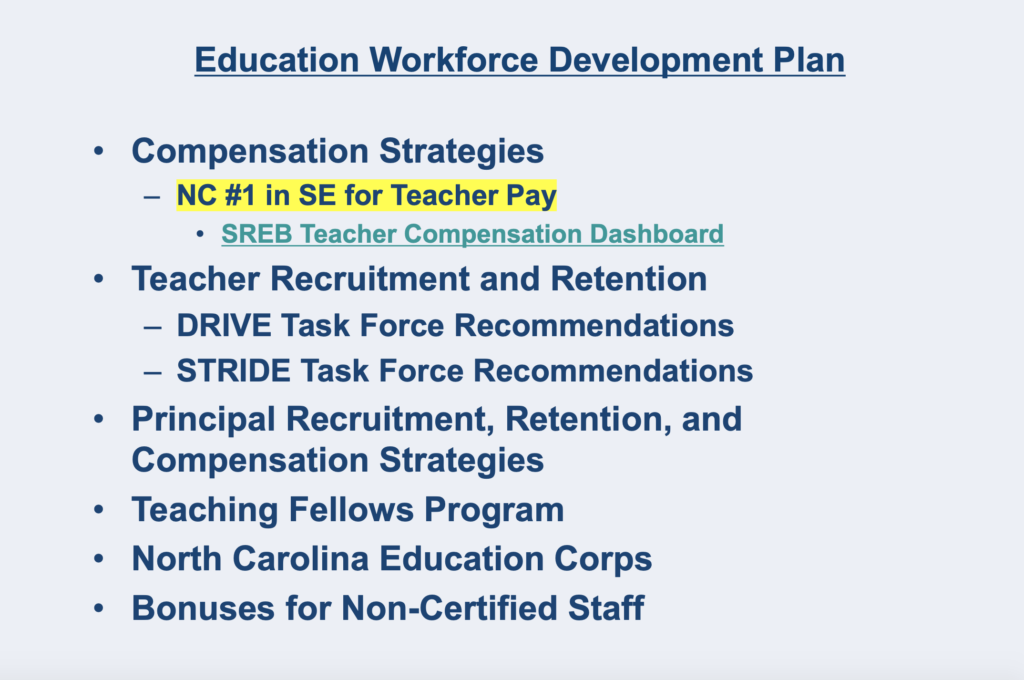
Superintendent’s report
During the superintendent’s report, Truitt talked about her vision for the Department of Public Instruction (DPI) and also touched upon priorities for the long session of the General Assembly.
She talked about what she calls her north star: “All students deserve a highly-qualified, excellent teacher in every classroom.”
She also discussed the importance of mitigating the impacts of COVID-19, and announced the addition of Michael Maher to DPI as director of learning loss recovery. Maher is a vice chair of the Professional Educator Preparation and Standards Commission (PEPSC) who ran as a Democrat for state superintendent in the 2020 primary.
As to the current long session of the General Assembly, Truitt laid out the following three priorities.
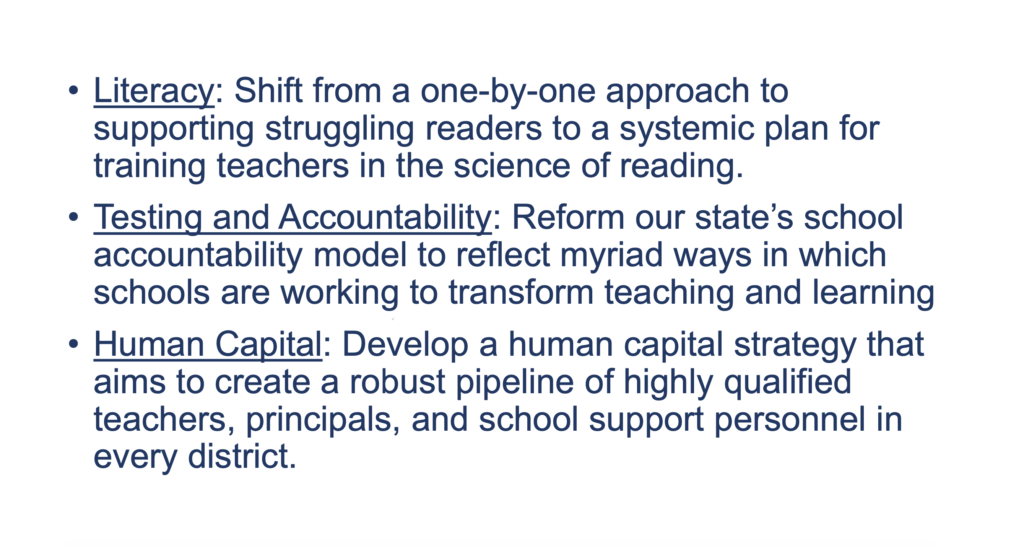
Hear her comments below. You can read her statement about her priorities here.
COVID-19 relief
The State Board heard a presentation on the roughly $1.6 billion coming to North Carolina schools from the federal government for additional COVID-19 relief. Ninety percent of that money will pass through DPI to local school districts, and the presentation included a draft of how the money is to be distributed to districts.
DPI can hold back 10% of the $1.6 billion for administrative costs and to “address emergency needs as determined by the State Board of Education to address issues responding to coronavirus.”
Th $1.6 billion is substantially more than the $396 million North Carolina received from the federal government last spring for COVID-19 relief.
Report on crime and violence, suspensions, and expulsions
Every year, DPI reports on crime and violence in schools, as well as discipline of students. This year, the data is skewed somewhat by COVID-19. According to information in the Board agenda, “there was a significant reduction in the number of crimes, suspension and expulsions reported after March 30, 2020. Additionally, there were fewer dropout exit dates during the months following March. Thus, drawing conclusions or making comparisons to prior years should be done cautiously.”
Additionally, the agenda gives the following highlights from the report.
- “There were 7,158 acts of reportable crimes across the state during the 2019-2020 school year, with the crime rate of 4.69 crimes per 1000 students.
- “In 2019-2020, there were 152,873 short-term suspensions as a result of criminal or non-criminal acts (unacceptable behaviors) reported statewide.
- “Of the 152,873 short-term suspensions in 2019-2020, 146,657 (96.0%) were given as a result of an incident involving unacceptable behaviors (non-criminal acts).
- “In 2019-2020, 405 long-term suspensions were reported.
- “In 2019-2020, there were 21 expulsions in North Carolina schools.
- “Zero school districts reported the use of corporal punishment during the 2019-2020 academic year.
- “In 2019-2020, statewide 1,790 students were replaced in Alternative Learning Programs and Schools instead of being giving long-term suspensions. If these students had been given long-term suspensions instead of being given an Alternative Learning Placement, the number of long-term suspensions statewide would have been 2,195 for the 2019-2020 school year.
- “In 2019-2020, North Carolina public schools assigned 182,133 in-school suspensions of a half day or more to 97,976 students.
- “There were 10,757 enrollments into Alternative Learning Programs and Schools throughout the 2019-2020 school year.
- “The North Carolina high school dropout rate for the 2019-2020 academic year is 1.53 dropouts per 100 high school students.”
Here is the presentation.
COVID-19 update
Staff from the state Department of Health and Human Services (DHHS) gave a presentation on COVID-19, explaining that cases are going down statewide and bolstering support for Gov. Roy Cooper’s request that schools around the state bring students back for in-person education.
According to DHHS staff, the data shows that schools don’t add to community transmission rates, that reopening schools is not likely to lead to a large rise in cases, and that there is “limited disease transmission” between children and between children and adults.
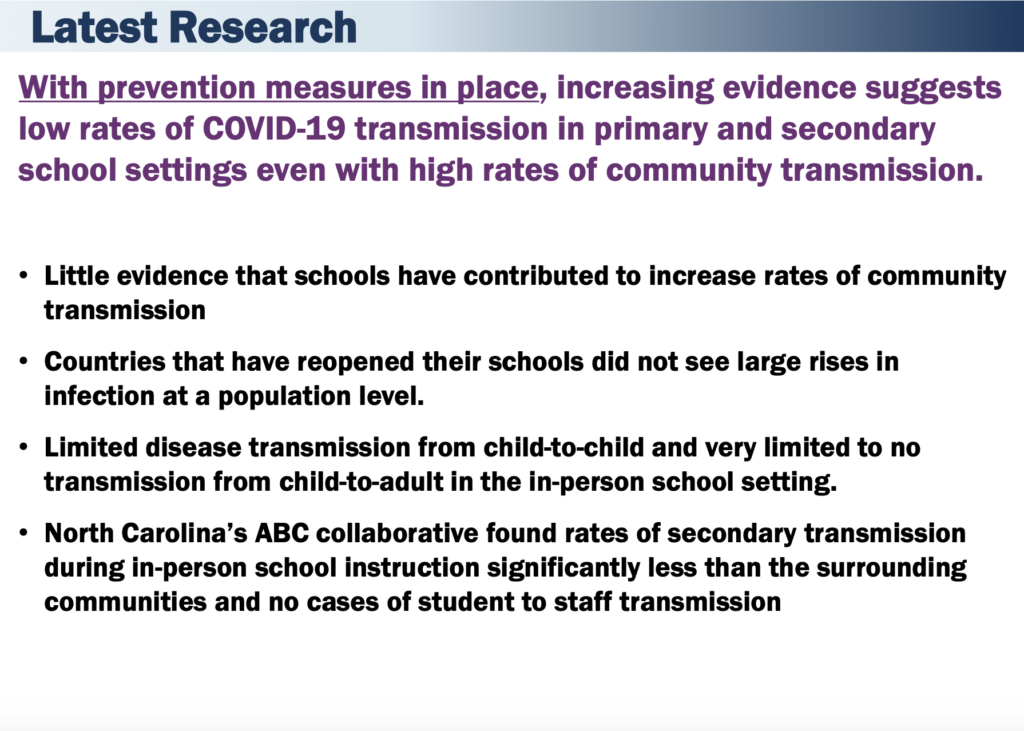
The caveat with all of this is that preventive measures must be taken.
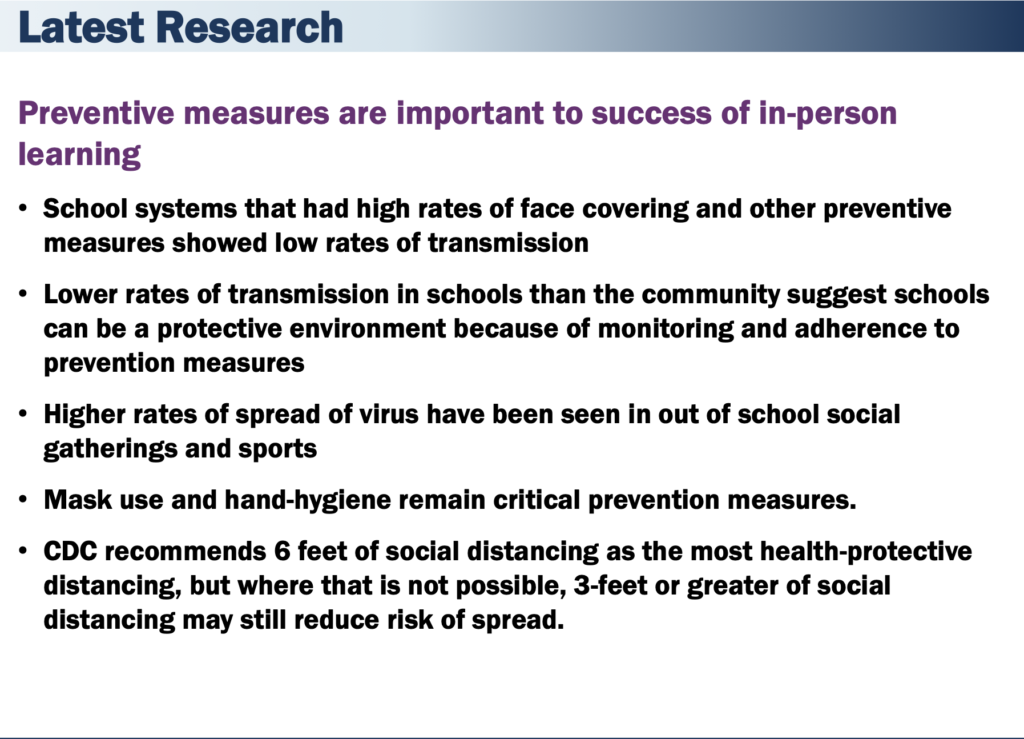
The DHHS staff presented the following COVID-19 guidance from the American Academy of Pediatrics for keeping schools safe.
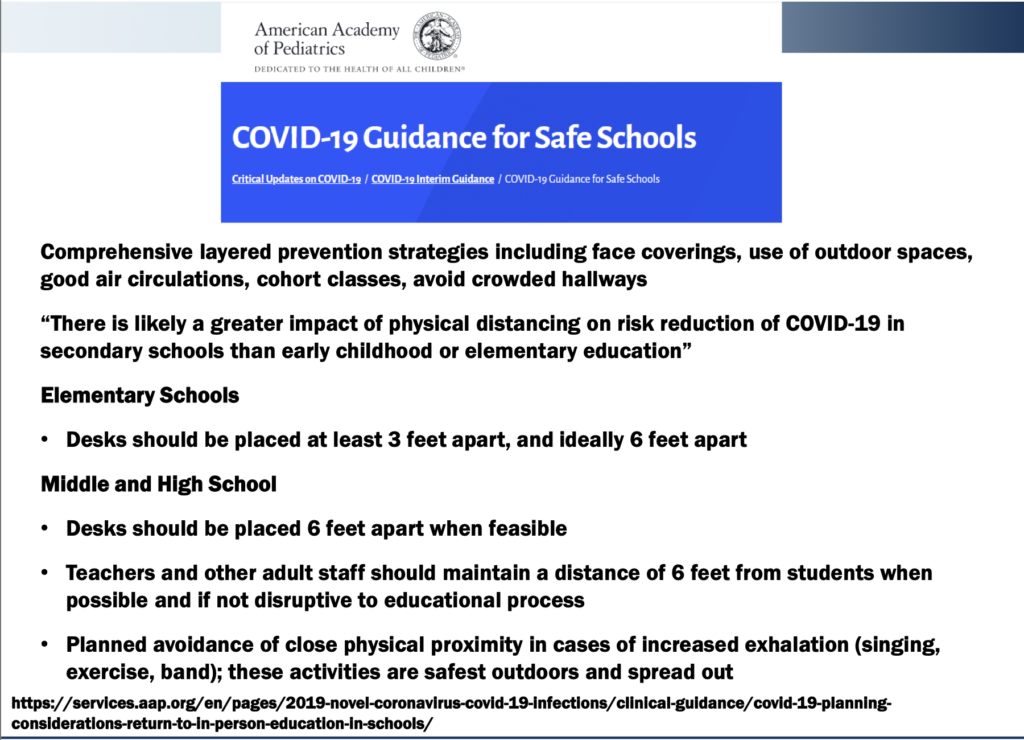
They also gave the following advice on how to bring students in different grades back into schools.
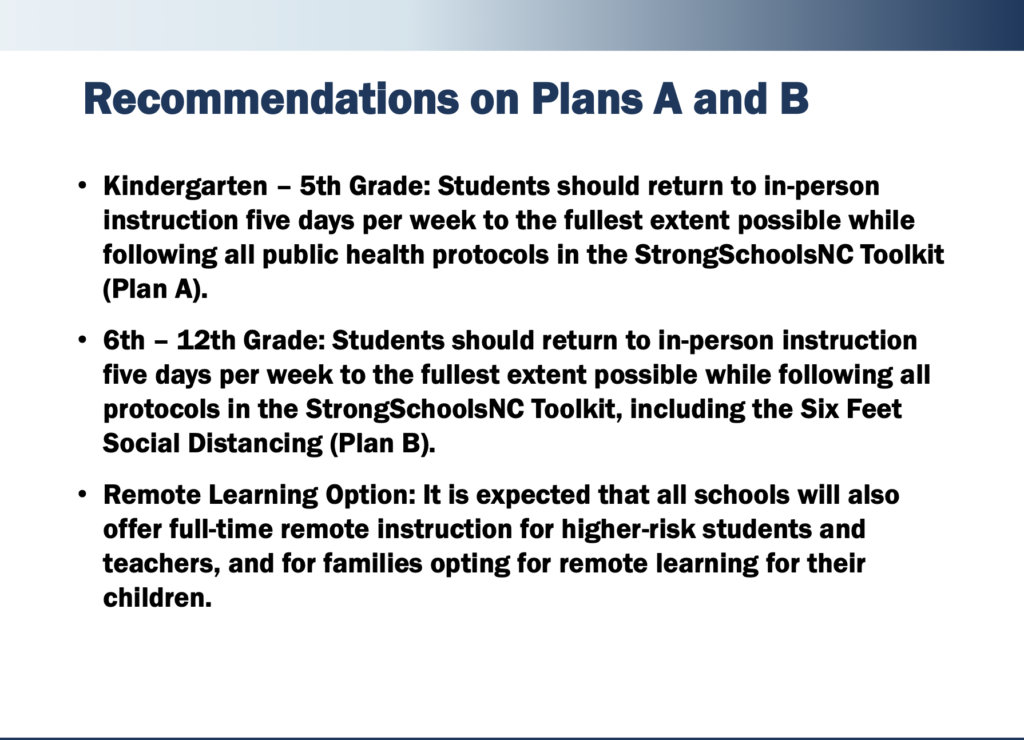
The presentation also included the latest data on COVID-19 in schools.
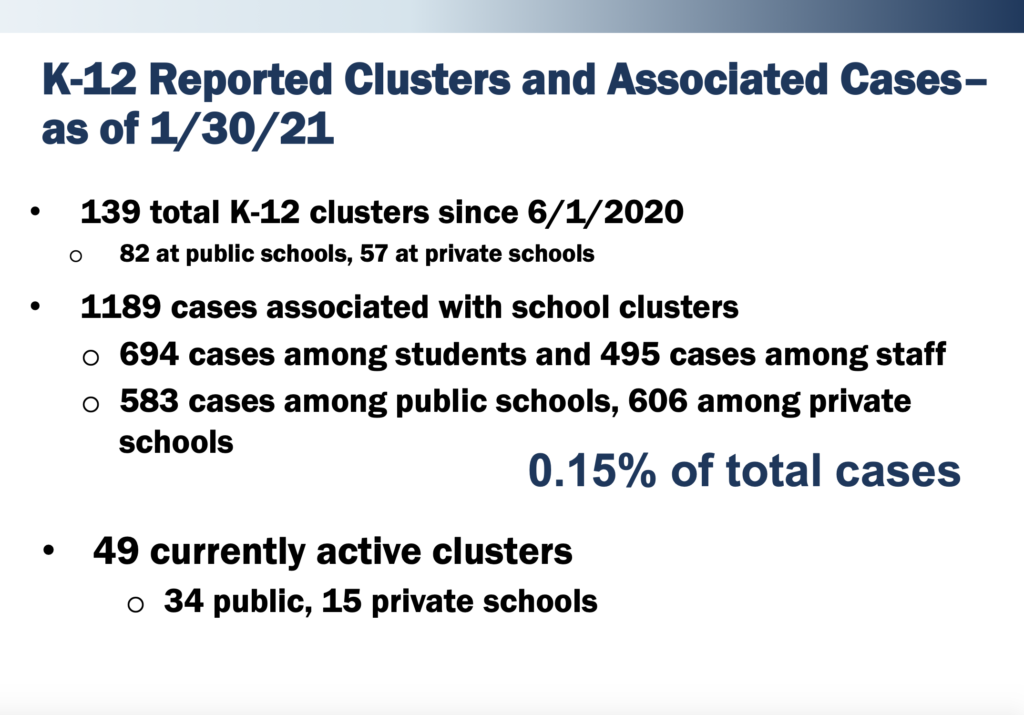
Here is the complete presentation.
Here is the updated toolkit from DHHS providing guidance for schools navigating COVID-19.
K-3 literacy update
The State Board heard a presentation on K-3 literacy and the state’s framework for providing it.
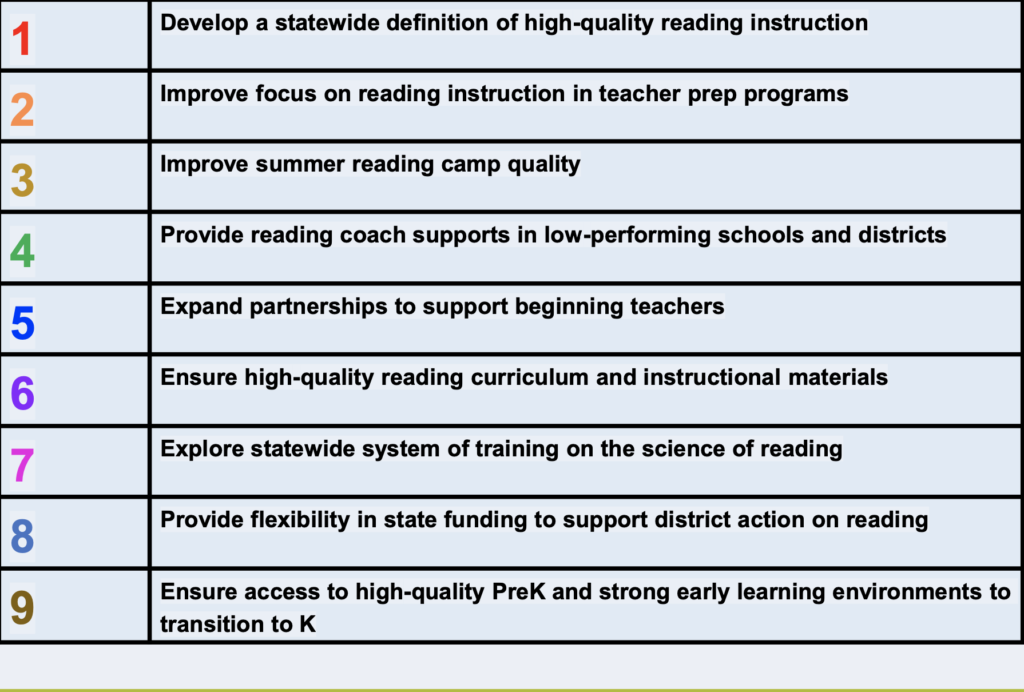
Included in the presentation was an updated definition for what constitutes high-quality reading instruction.
Here is the previous definition, and also revisions to the definition. You can see the revisions in red.
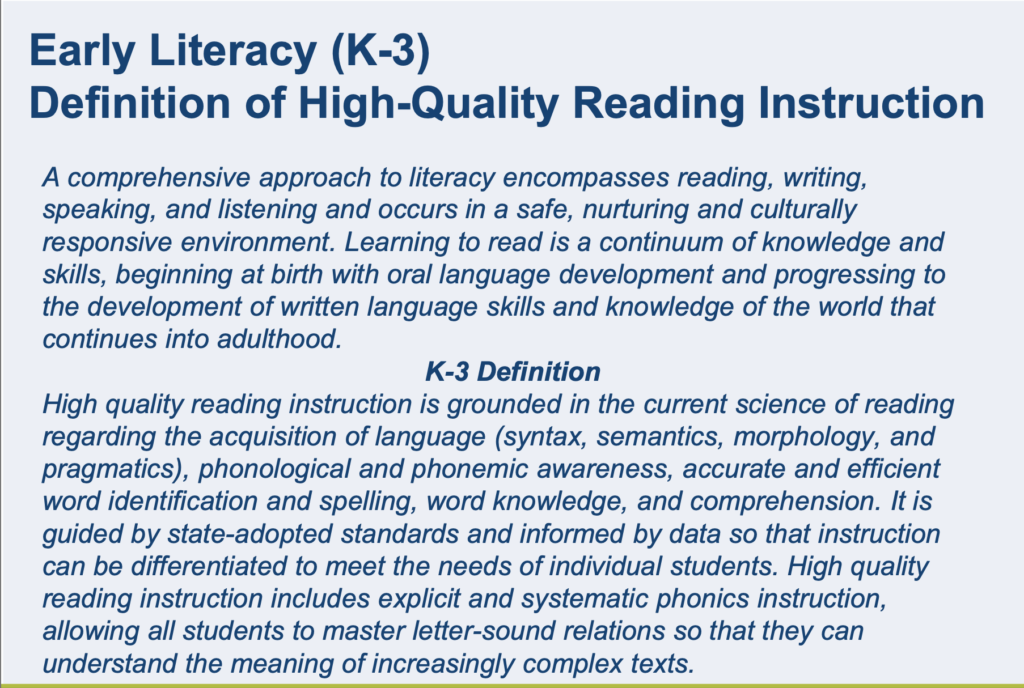
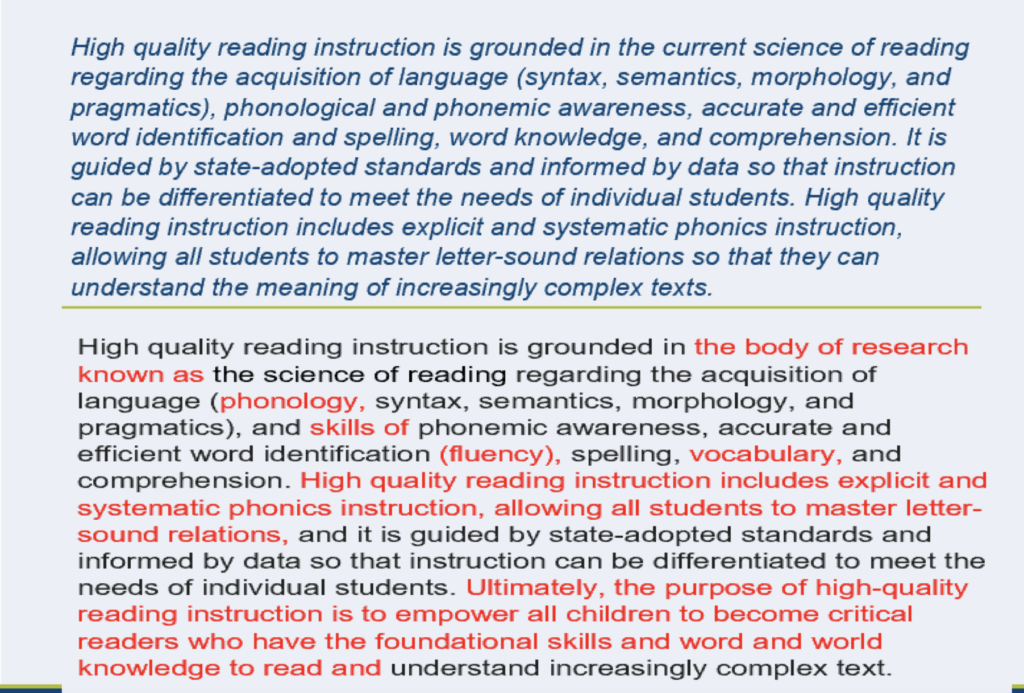
The presentation also included an announcement of a multi-state collaboration on early literacy between North Carolina, Arizona, Colorado, Massachusetts, Missouri, and Ohio.
For more details, see the full presentation below.
Transforming the teaching profession
During its issues session, the State Board heard a presentation on a possible plan for changing the way people become teachers and bolstering the education workforce in North Carolina.
The work is the product of the North Carolina Education Human Capital Roundtable, a group of people with expertise in the field who came together to try to figure out how to fill the shortage of teachers in the state. The roundtable included people from DPI, the State Board, the governor’s office, higher education, and more.

With the goal of “increasing the quality, quantity, diversity and equitable distribution of the teaching force,” the presentation first looked at some of the problems with the current licensure process.
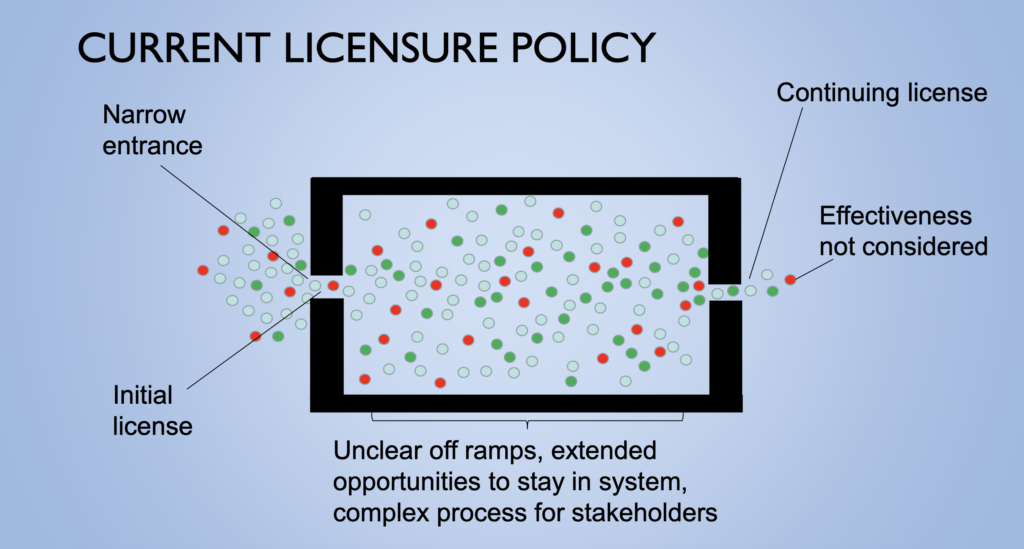
And then it tried to envision a better process for getting teachers in the profession.
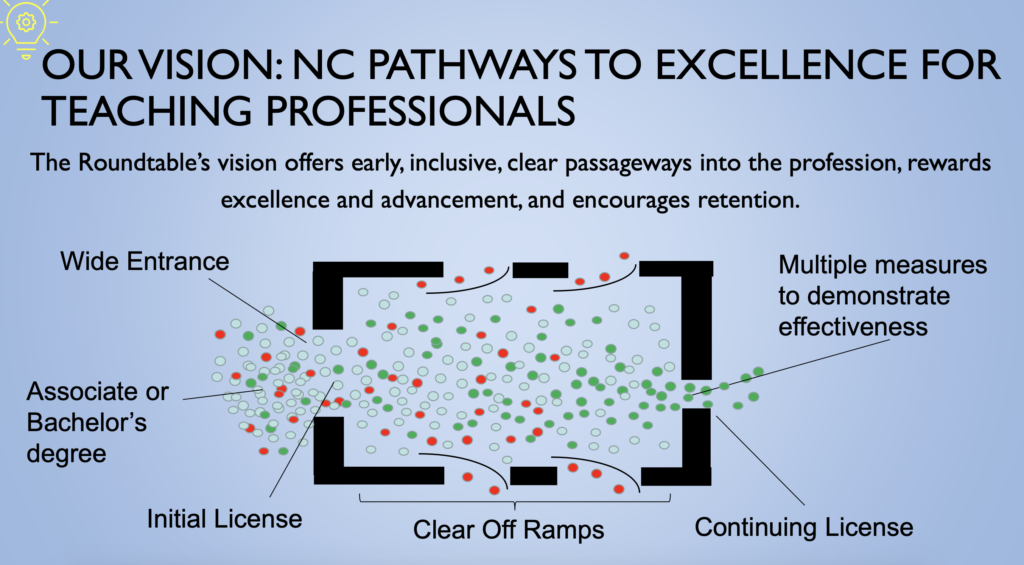
Part of the new process includes “clear off ramps,” which is another way of saying that people who won’t be able to make it as teachers can be weeded out. Those clear signals would be things like a “lack of demonstrated content or pedagogical skills or competencies,” or a “lack of demonstrated effectiveness.”
Roundtable members also envision a more gradual progression for teachers through the licensure process with multiple tiers.
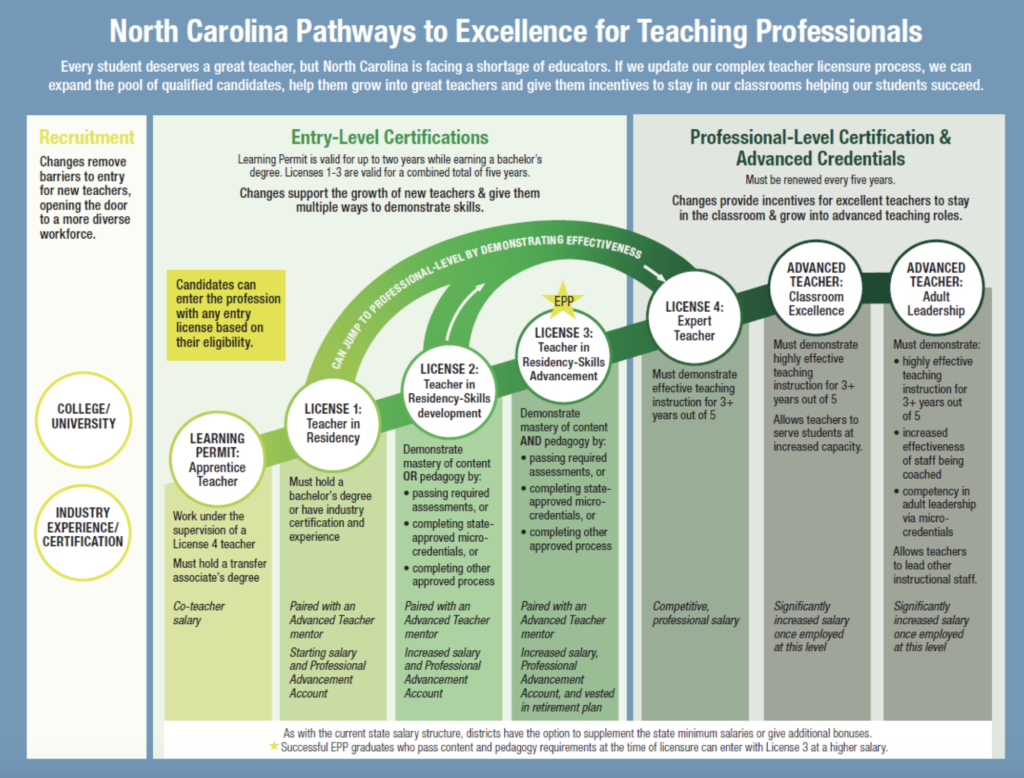
The proposal is just up for discussion, but the roundtable is asking that the State Board take its ideas under consideration.
Here is the complete presentation with more detail on how a new process could work.
Average daily membership
The State Board heard a presentation on average daily membership (ADM) — basically a technical way of calculating how many students are in a school. It’s an important figure because state budgeting for schools and districts is based on it.
The following chart shows the change in ADM over time, with the state’s traditional public school system largely losing ADM between 2009 and now, and charter schools gaining ADM, particularly after 2011 when the 100-school cap was lifted on charters.
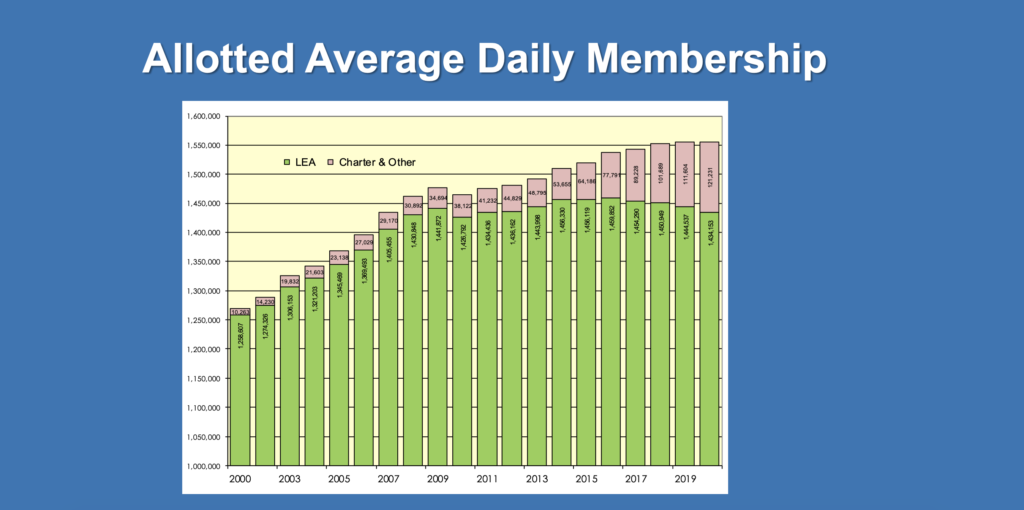
Part of the traditional public school declines can be attributed to declining birth rates and fewer people ages 5-17 in the population over time, according to the presentation. But the addition of more homeschools in the state has also led to fewer students in the traditional public school system, as has the addition of more and bigger charter schools.
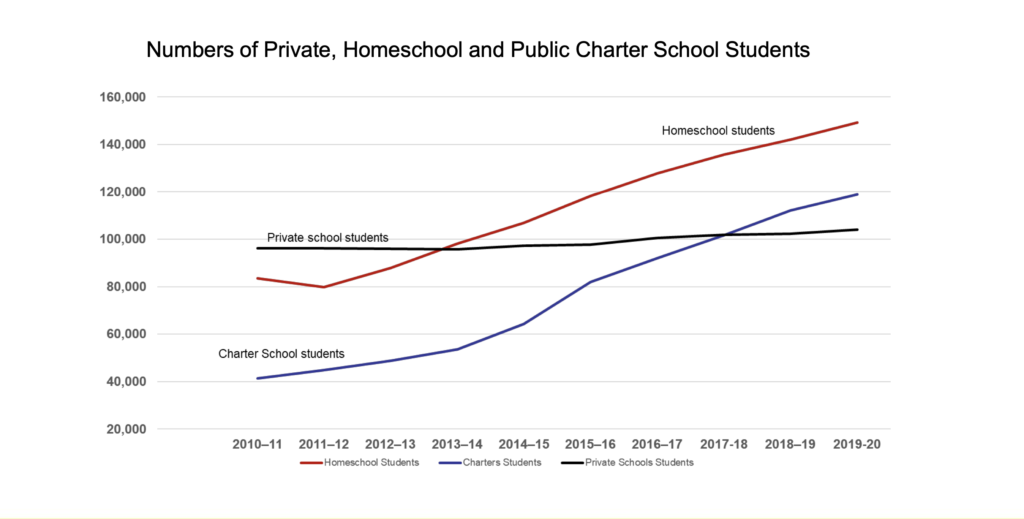
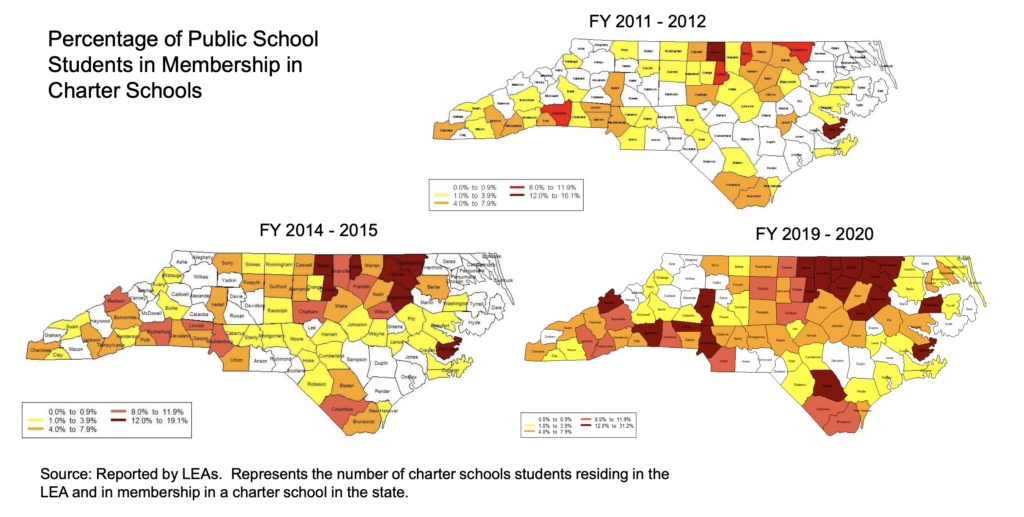
The following charts show the change in ADM at districts around the state over time.
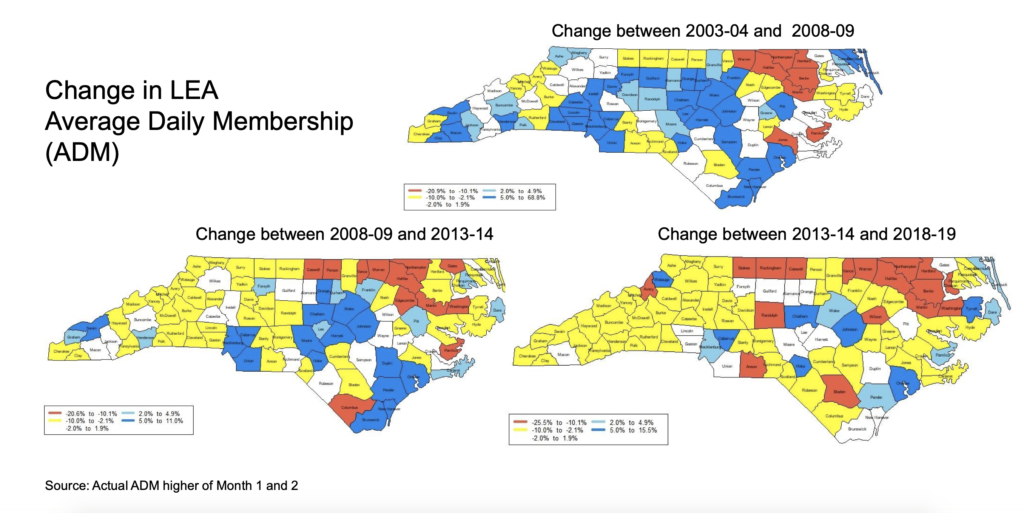
The Board also heard about the decrease in ADM that is particular to the COVID-19 crisis. DPI is projecting somewhat of a rebound in the years ahead, however.
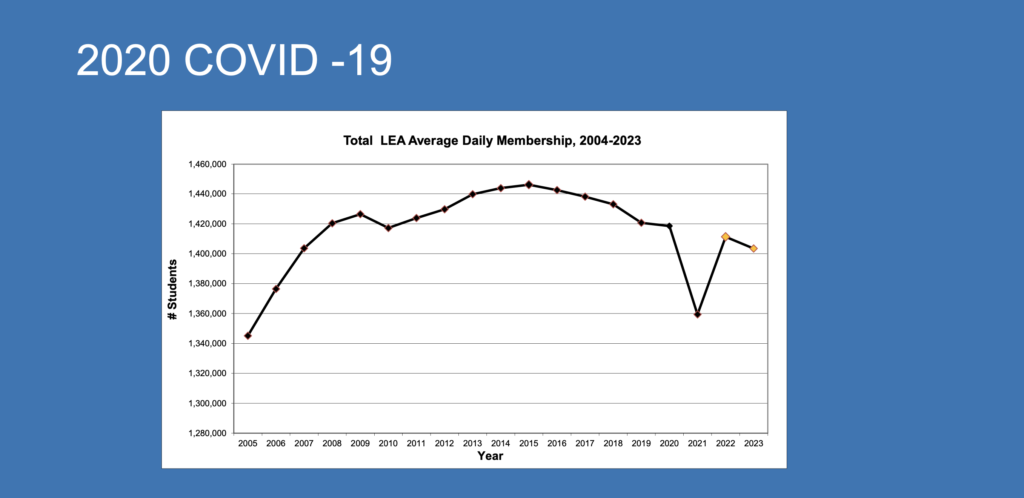
See the full presentation below.

